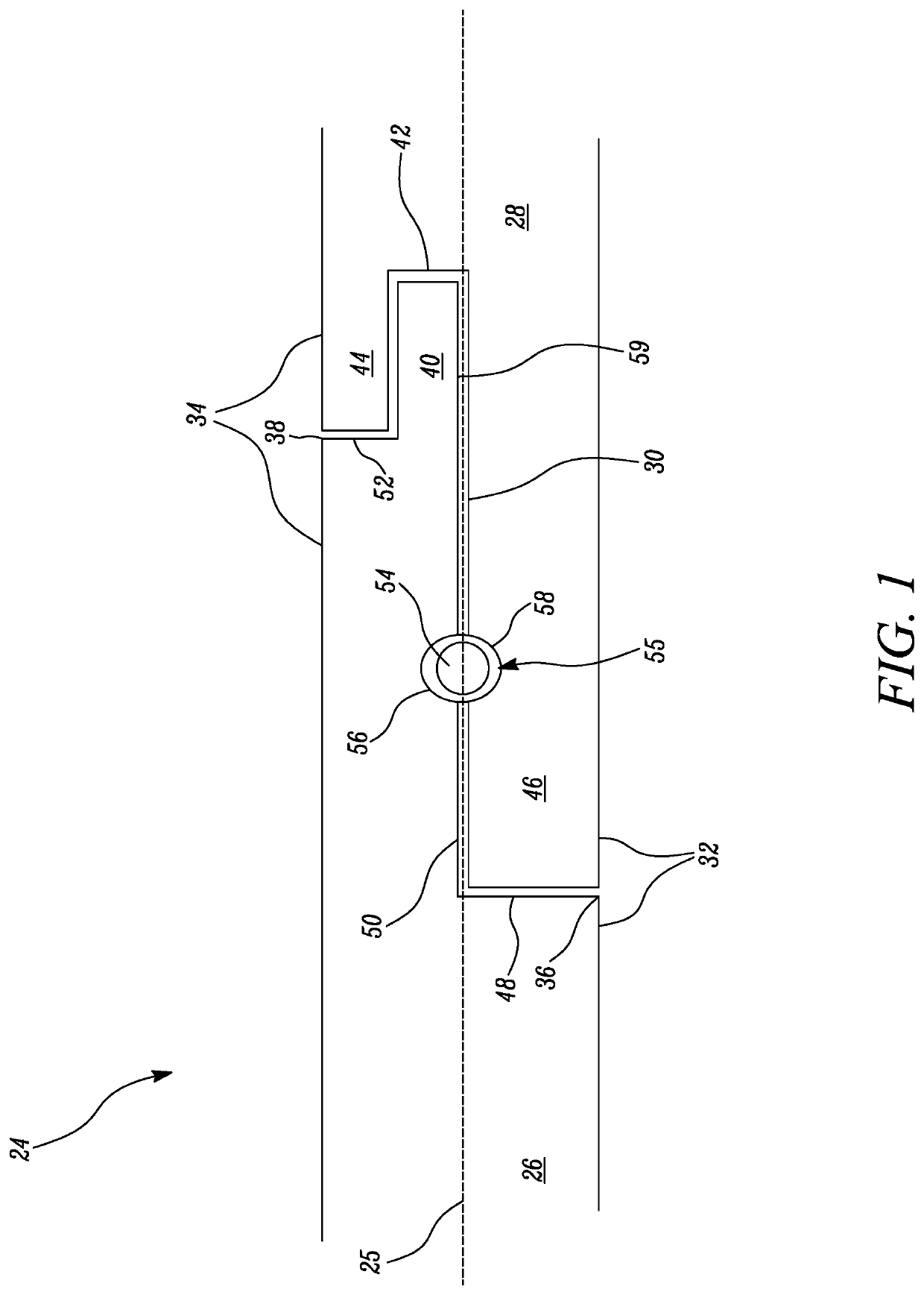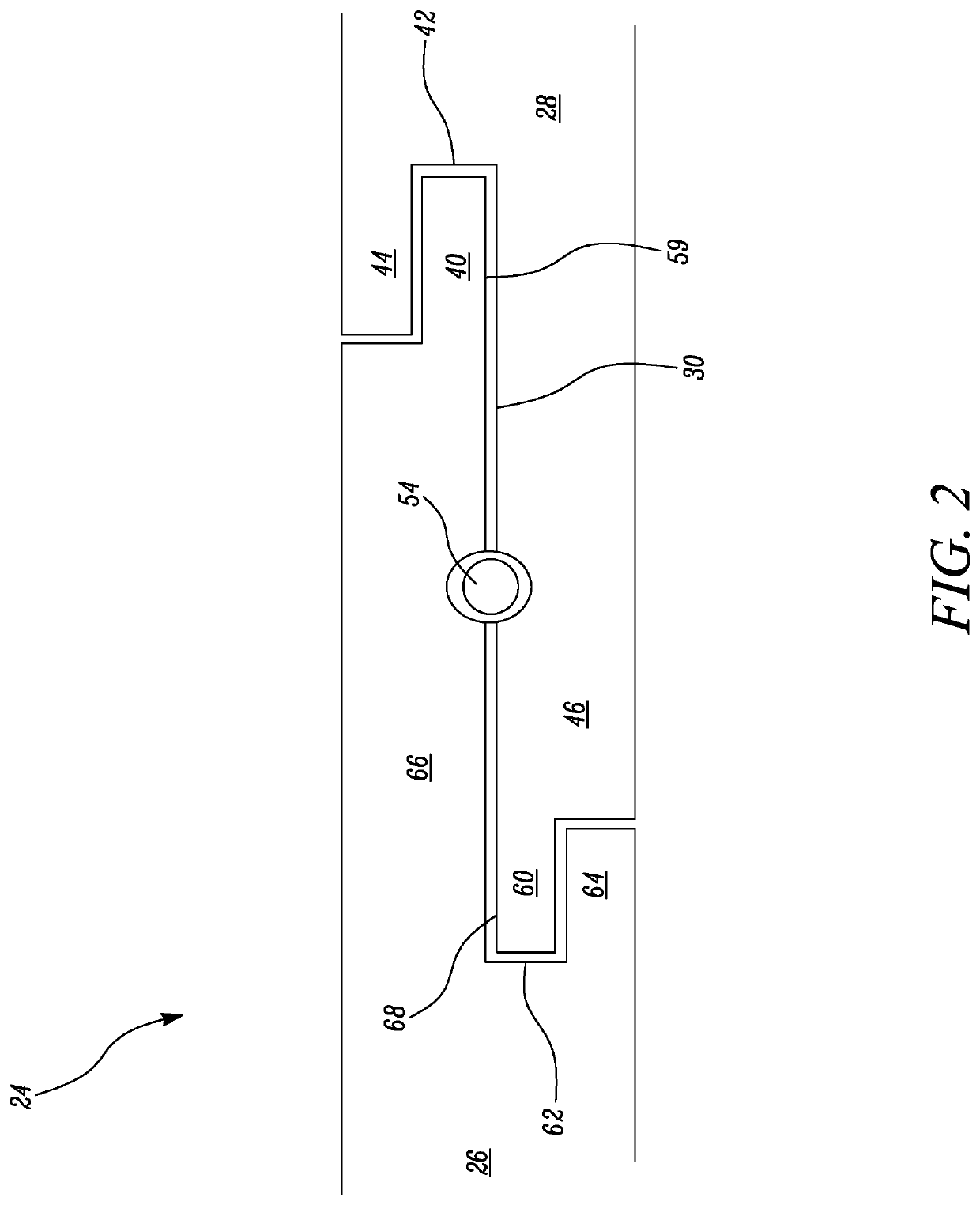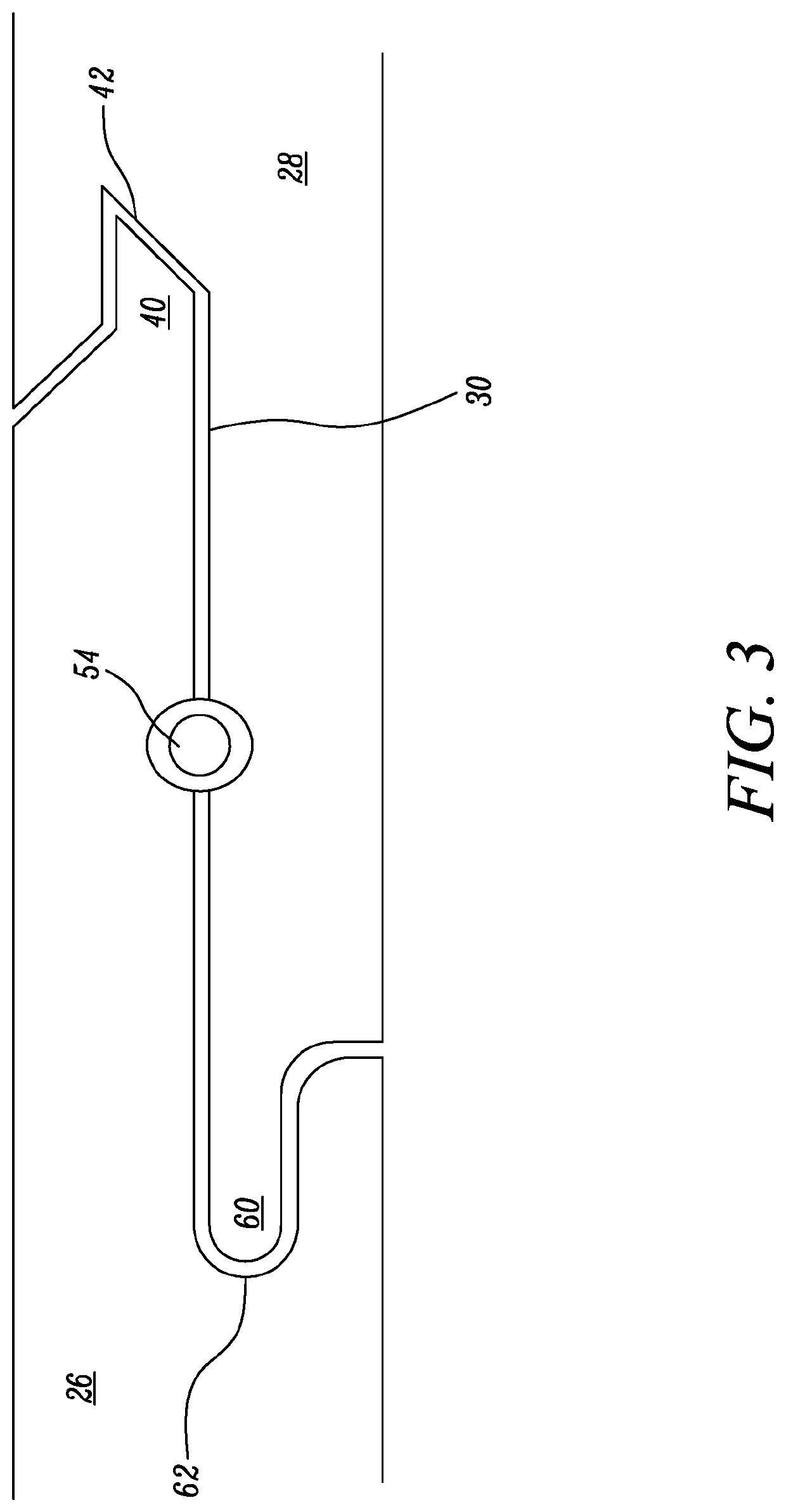Joint assembly
a joint assembly and assembly technology, applied in the direction of sheet joining, key-type connection, fastening means, etc., can solve the problems of bolts prone to galling and seizing, thermal cycling problems, and high cost and time-consuming
- Summary
- Abstract
- Description
- Claims
- Application Information
AI Technical Summary
Benefits of technology
Problems solved by technology
Method used
Image
Examples
Embodiment Construction
[0029]FIG. 1 shows a sectional view through a joint assembly 24 according to a first example of the disclosure.
[0030]The joint assembly 24 comprises a first member 26 and a second member 28, joined together at an interface 30 located between opposing surfaces of the first and second member. The joint assembly 24 is configured to unite the first and second member to provide a releasable or permanent connection therebetween.
[0031]In this example, the first 26 and second 28 members are annular in form and the joint assembly 24 is for a revolute component. Both the first and second members are hollow. In other examples, only the first member 26, or an end portion thereof, need be hollow and the second member 28 could have a solid interior. Furthermore, the first 26 and second 28 members need not be circular in cross-section and could be elliptical or polygonal in different examples.
[0032]It will be appreciated that only one half of the joint section is shown in the examples herein, i.e....
PUM
 Login to View More
Login to View More Abstract
Description
Claims
Application Information
 Login to View More
Login to View More - R&D
- Intellectual Property
- Life Sciences
- Materials
- Tech Scout
- Unparalleled Data Quality
- Higher Quality Content
- 60% Fewer Hallucinations
Browse by: Latest US Patents, China's latest patents, Technical Efficacy Thesaurus, Application Domain, Technology Topic, Popular Technical Reports.
© 2025 PatSnap. All rights reserved.Legal|Privacy policy|Modern Slavery Act Transparency Statement|Sitemap|About US| Contact US: help@patsnap.com



